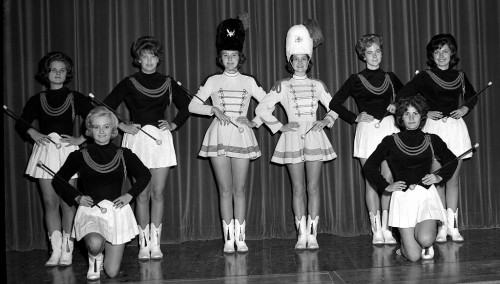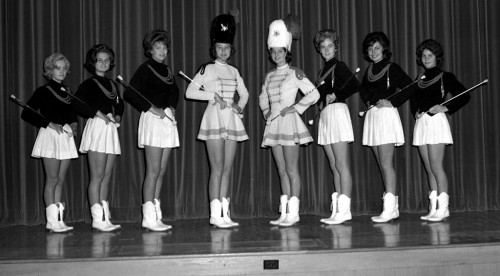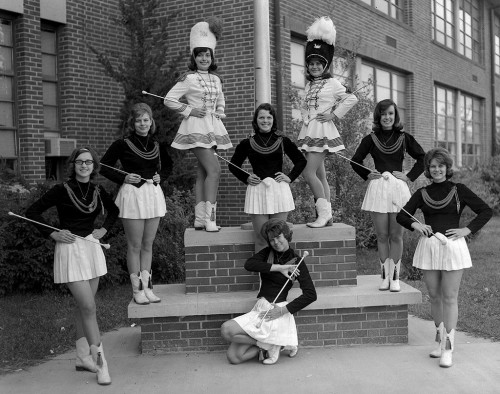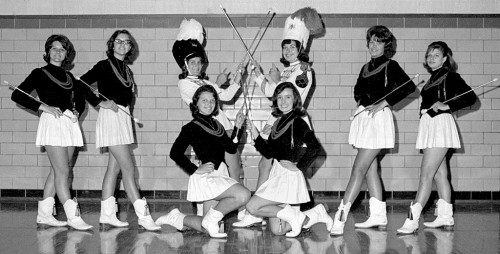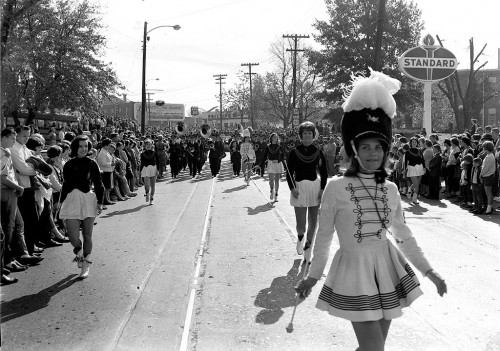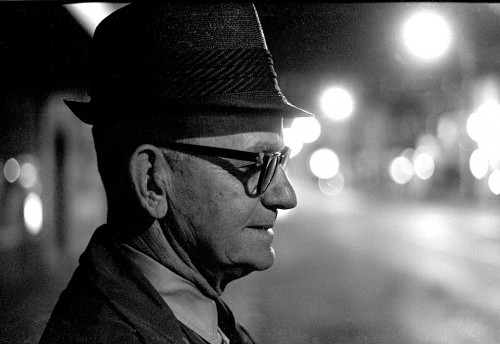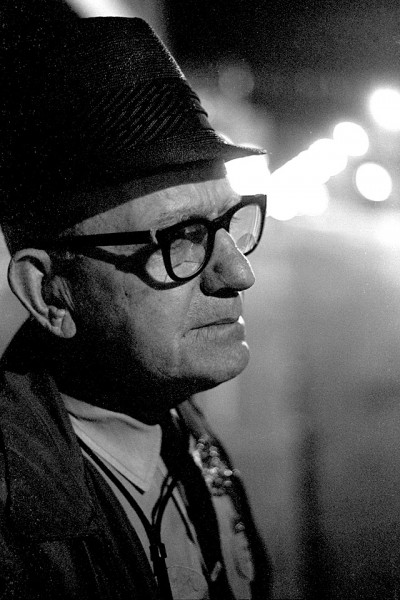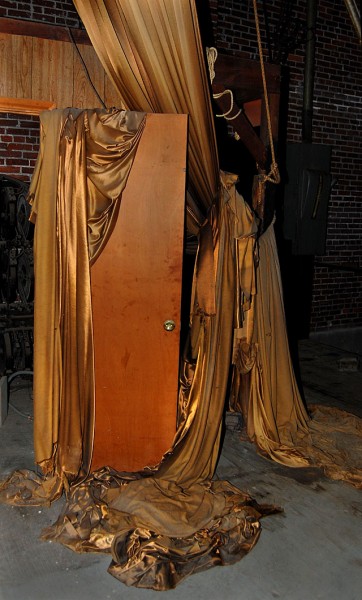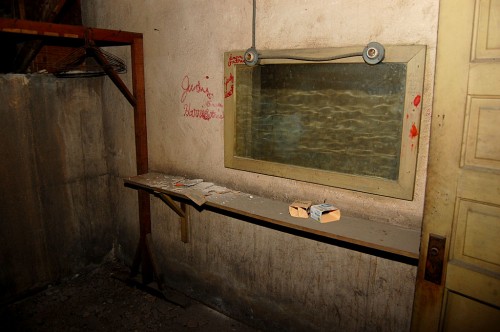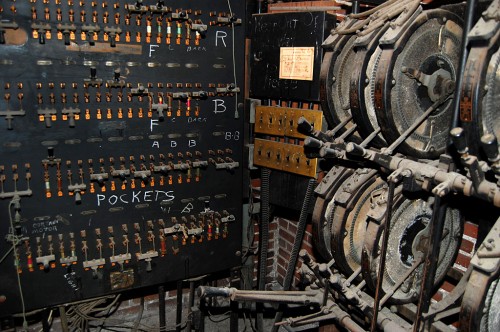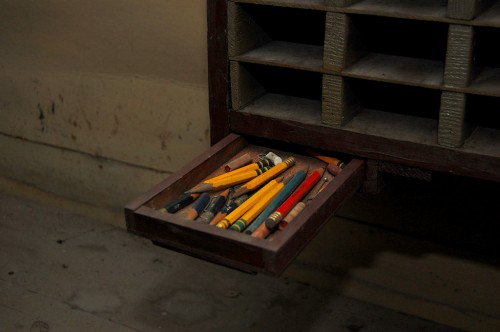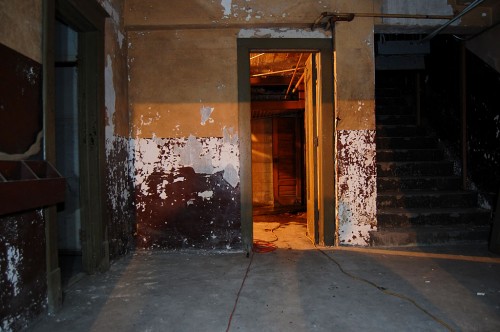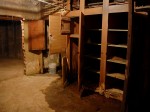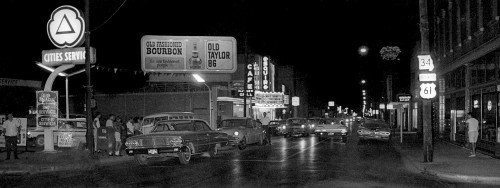 Looks like there might have been a minor fender-bender east of Pacific on Broadway on a warm night when the streets were wet. The negative is in poor shape, but there are all kinds of interesting things captured in the frame. Click on the photos to make them larger.
Looks like there might have been a minor fender-bender east of Pacific on Broadway on a warm night when the streets were wet. The negative is in poor shape, but there are all kinds of interesting things captured in the frame. Click on the photos to make them larger.
- I think it’s a fender bender because the car in the foreground (with a Ford Groves license plate) is empty.
- There’s a small crowd of gawkers gathering on the sidewalk.
- There’s a guy standing behind the second car exhibiting body language that he’s not particularly happy. You can see that same sort of thing at another crash at Fountain and Broadway where you can also read about Cape’s singing policeman, Fred Kaempfer.
Barely worth two shots
 It had to have been minor because it was only worth two shots. It wasn’t newsworthy enough to make the paper and it didn’t look like it would turn into an insurance job.
It had to have been minor because it was only worth two shots. It wasn’t newsworthy enough to make the paper and it didn’t look like it would turn into an insurance job.- The Esquire Theater is showing Walt Disney’s Moon Spinners.
- The Wayne’s Grill sign is still lit, probably open to catch late-night moviegoers. Wayne’s was the home of the best filet I’ve ever eaten, all for $1.25.
- Beard’s Sport shop is on the left side of the street just beyond the Esquire and just before the phone company.
- There’s a guy standing in front of the price sign at the Cities Service gas station, so we don’t know how much you had to pay to fill your tank, but I’m guessing it was going for about .39.9 a gallon. Thoni’s price wars that took it down to 19 cents didn’t usually make it that far into town.
- If you look above and to the left of the highway signs, you can see one of the cheesy plastic rose baskets that were supposed to symbolize City of Roses.
- Vandeven’s Merchantile is on the right. There’s a sign that looks like it says “Novelty Shop,” that might have been Bodine’s Gift Shop at 823 Broadway. Beyond it is the vertical sign for Radonics Electronics Radio and TV.
Is the Esquire deal off?
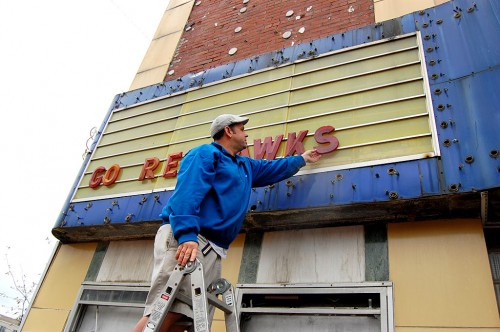 When I was home last fall, the big news was that the Esquire Theater, closed for first-run movies since 1984, was going to renovated by its new owner, John Buckner.
When I was home last fall, the big news was that the Esquire Theater, closed for first-run movies since 1984, was going to renovated by its new owner, John Buckner.
Well, it looks like the excitement might have been premature. One of Buckner’s enterprises, a new restaurant named Razing Cain, closed in less than a month. The Missourian is reporting that Buckner is now “rethinking” if he’s going forward with the Esquire project.

